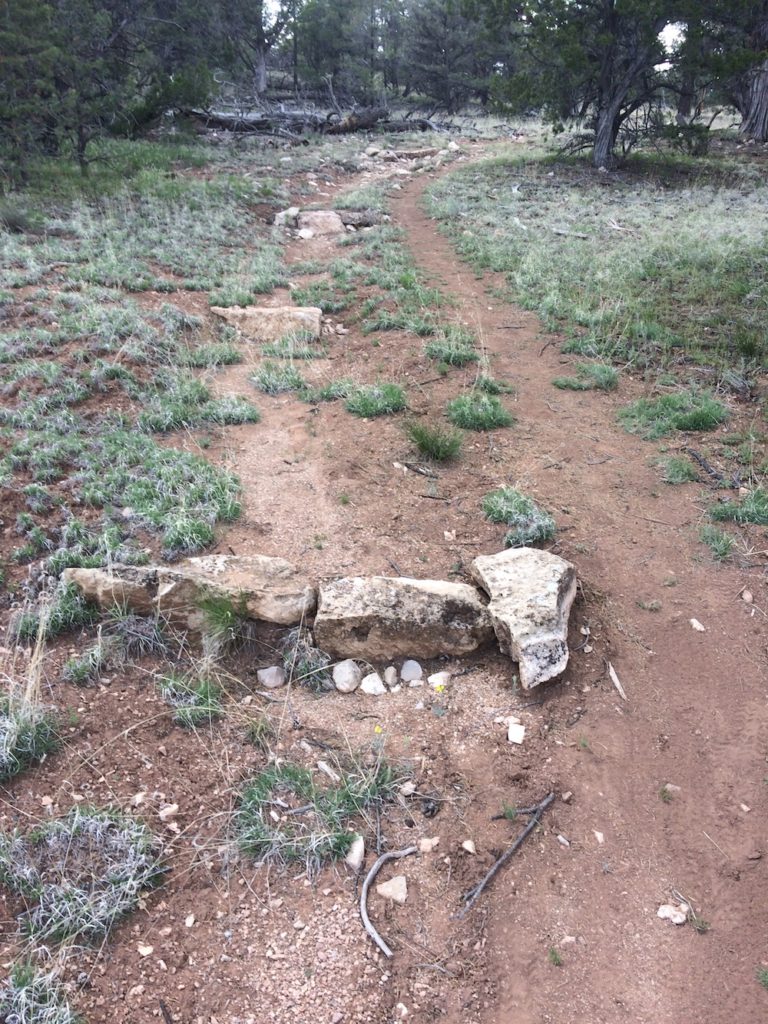
As you can see, most people were walking on the fresh trail on the right. Two years ago, that’s exactly where I would have walked too.
Except now—after building and maintaining trails for a year—I clearly see that this “fresh path” is a social trail. The official trail is just to its left, as shown below:
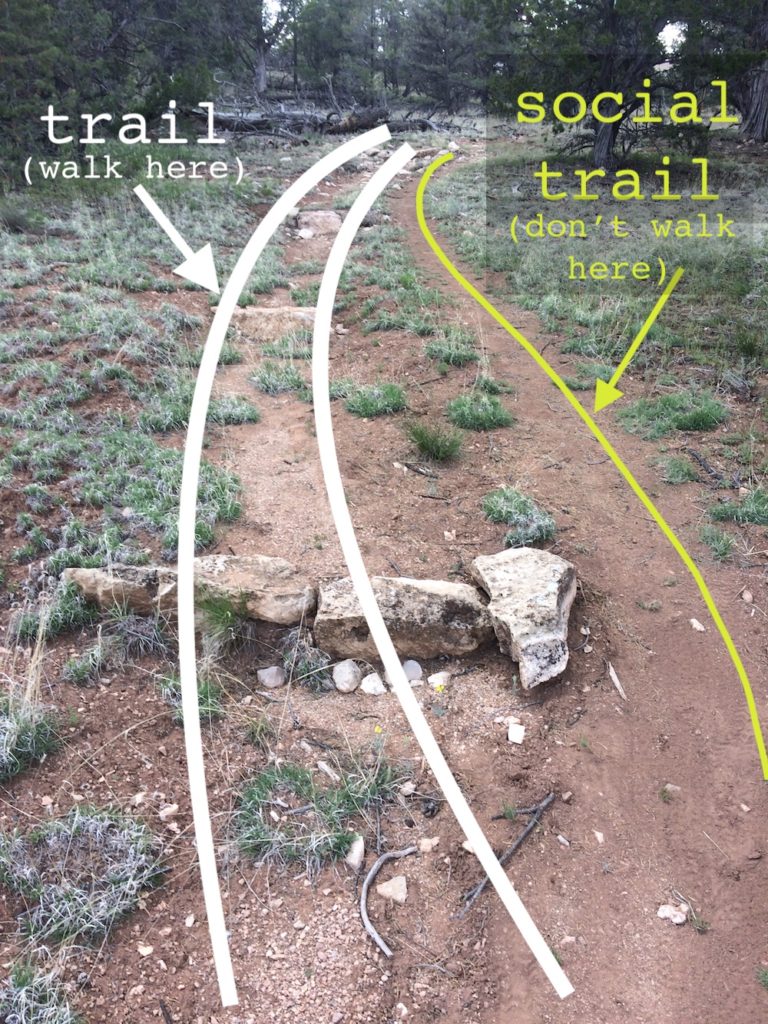
Since becoming a trail worker and hiker, I see this over and over: for some reason, hikers often avoid walking on rocks on trail.
But the rock “steps” you see on the official trial above? They were put there on purpose by trail builders! They’re absolutely meant to be walked on.
Check Steps
The large, flat rocks you’ll see most often in the middle of trails are called check steps. They’re installed to retain soil behind the step, but to allow water to flow over it. (A huge chunk of trail work involves water, imagining its path, and installing features to prevent erosion.)
Here’s a check step at the Grand Canyon (Hermit’s Trail), built by Dra and I in 2017!
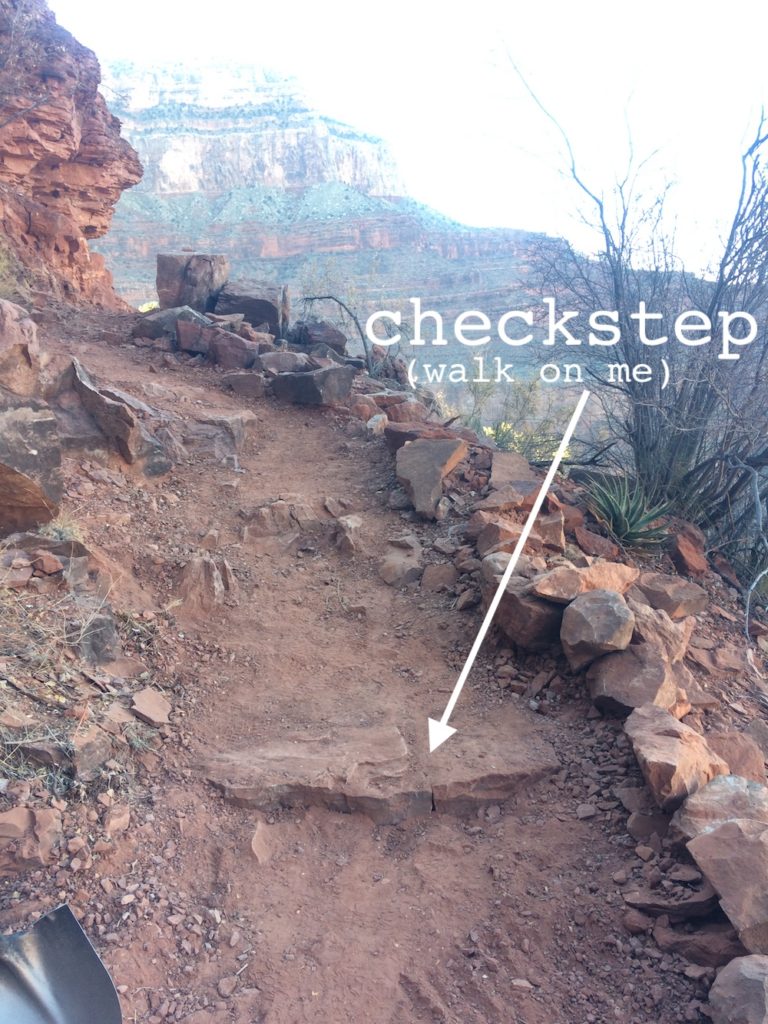
Water Bars
Sometimes there will be water bars cutting diagonally across the trail, to help water flow off trail, which you can simply step over. Just please don’t walk around them; this defeats the purpose. (The trail would get eroded around the water bar, and water would start to flow on the social trail where footsteps carved out a path—instead of the intended drainage route.)
You can kind of see this happening below. It’s another photo from the AZT. Knowing what you know now, where are you going to walk?
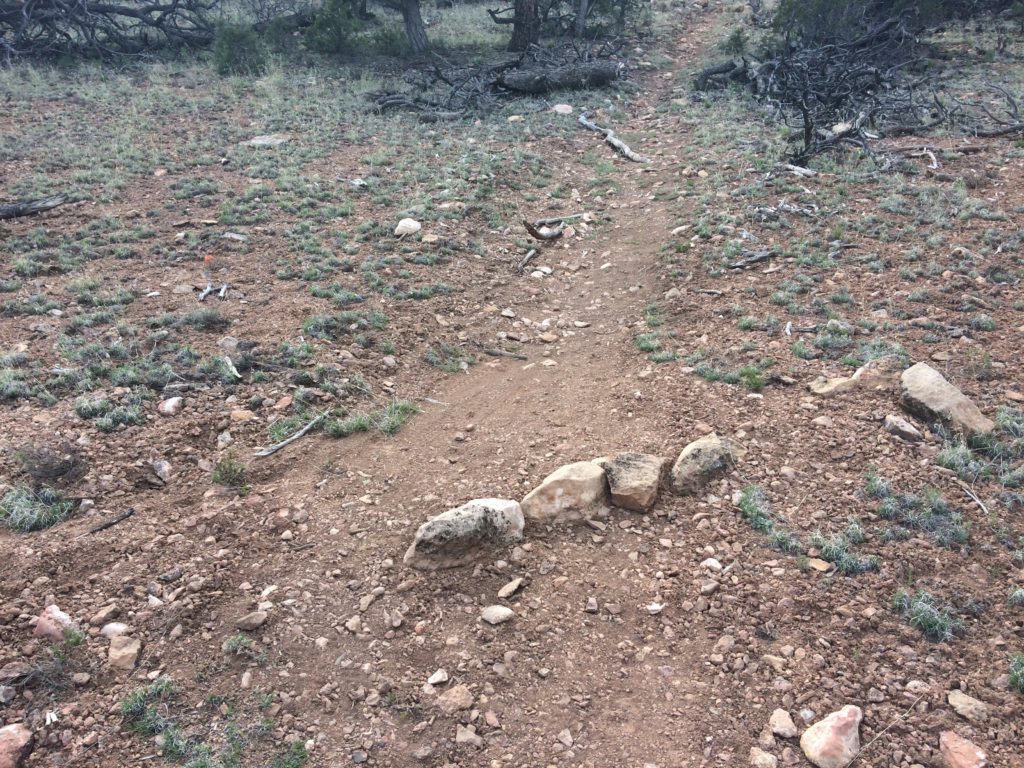
If you said the white path drawn below, yay!
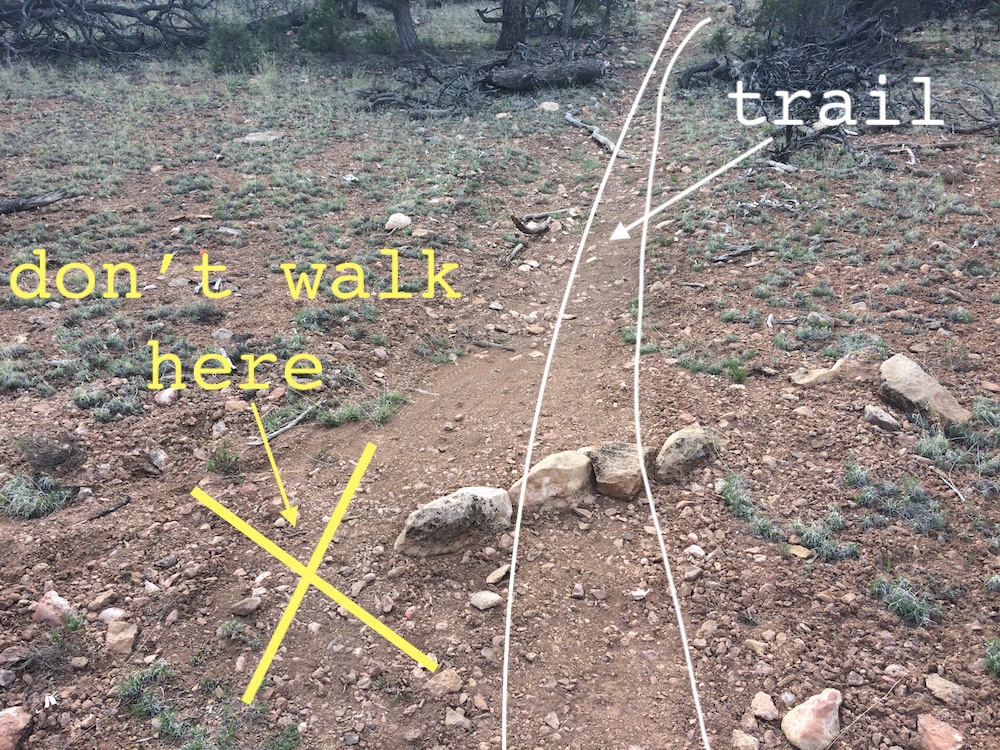
(Fun fact: After taking the above photos, I naturalized both social trails. It was the only bit of trail work I did while hiking; naturalizing is one of my favorites!)
Switchbacks
One final trail feature I want to illustrate are switchbacks. You’ll see switchbacks when climbing or descending. Switchbacks are when the trail sharply curves to zig zag up an incline, so you keep switching the direction you’re walking as you ascend.

Like all the other features, it’s pretty simple: The way to hike on switchbacks (to maintain trails and follow LNT) is to stay on trail. That’s it!
Trails Are Designed
The main takeaway here is that National Scenic Trails are intentionally designed. A lot of thought goes into it: preventing erosion, keeping inclines at a reasonable grade, taking hikers to interesting natural/cultural features, etc. To help these trails do what they were built to do, all you need to do is stay on them. Ta-da!
I appreciate you being here and taking the time to learn with me today. May you go forth and enjoy hiking on many trails with this handy new knowledge!
PS – If you’re curious to learn more about trails, I highly recommend the book “On Trails: An Exploration.” It’s not dry, I promise!